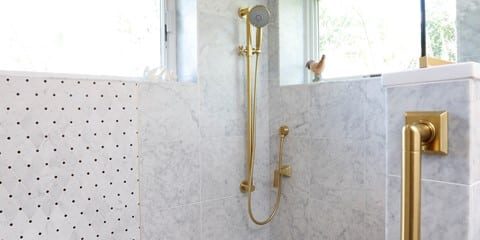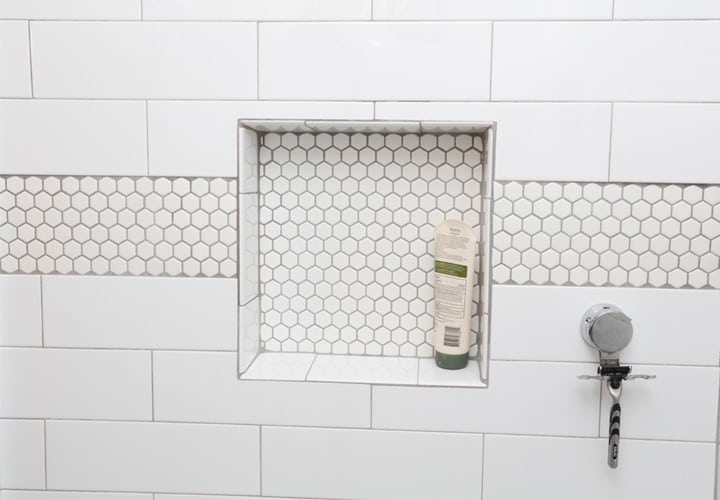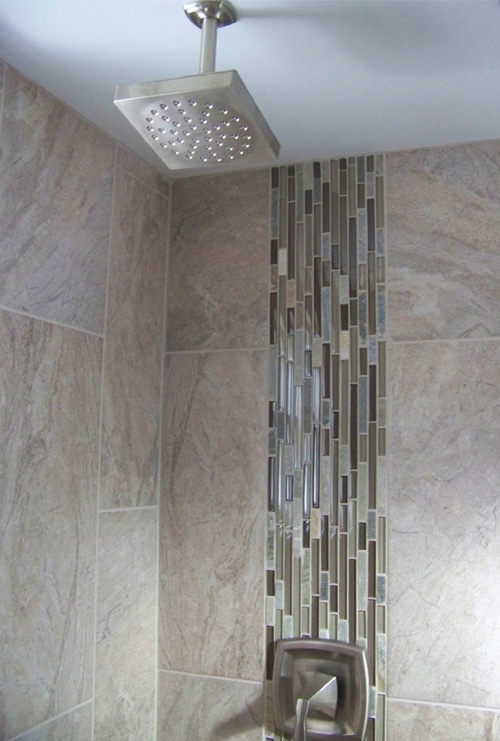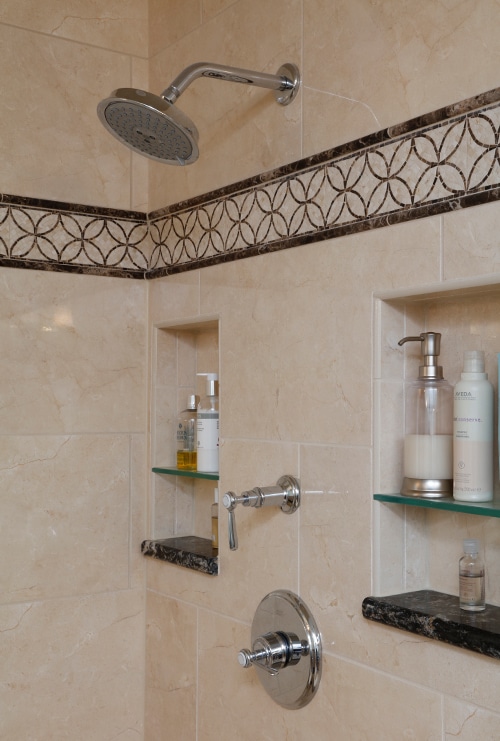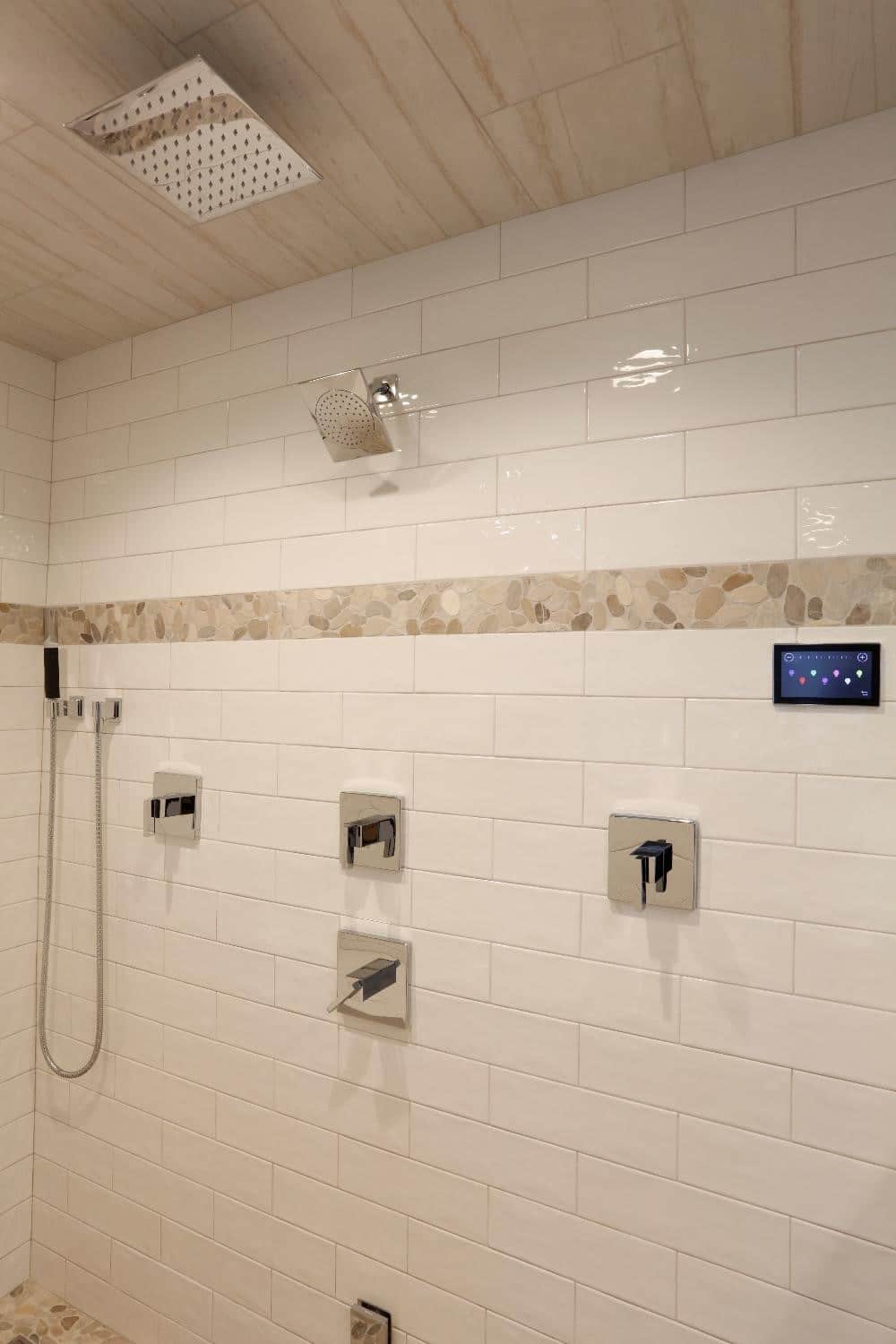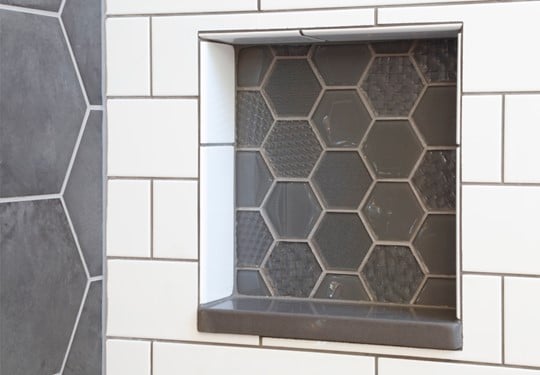Choosing the Right Size Tile for Your Shower
Nothing makes a bathroom more welcoming than a gorgeous shower. Tile is one of our favorite ways to design a shower that looks great and is easy to keep clean. But there are so many different tile sizes, colors, patterns, and materials, it can be hard to know which tile works best for your actual shower application.
So, what is the best size tile to use in a shower? The most popular tile sizes for showers are 3”x 6” and 12” x 24”. Smaller showers can use 3” x 6” tile, and larger showers can go with 4” x 12” or 12” x 24” tiles.
| Shower Size | Tile Size |
| Small Walls | 3” x 6” tiles |
| Large Walls | 12” x 24” tiles |
| Shower Floors | 2” x 2” or 3 x 3” tiles |
Should You Use Big or Small Tiles in a Shower?
Today’s ceramic and porcelain tiles offer so many options for creating beautiful shower enclosures—from 5/8” mosaic and penny tiles to dramatic 12” x 24” faux stone tiles.
To arrive at the best look for your shower, compare tile products in various sizes to see what looks best in your space. Larger tiles, 12” and up, are trendy in 2022. But a classic subway tile is timeless. While choosing the right tile for your shower comes down to personal style choice, there are a few rules of thumb about tile design and installation.
How To Use Tile to Make Your Shower Look Bigger
Running tiles from floor to ceiling—stacked horizontally or vertically—can make a design statement in your bathroom. The clean lines created by the stacked tile carry the eye upward, making your shower space look larger. To achieve that open, airy look, choose a grout color that matches or blends in with the tile for a seamless installation.
Make Your Room Look Wider By Using the Same Small-Sized Tile on Both Shower Floor and Walls
Some design applications choose to run the same tile on the floor, up the wall and shower ceiling. But, again, the tile is used as a continuous design element that creates a seamless look for a bigger, more open feel within the space.
Tile Sizes for Shower Walls vs. Floor
Generally, shower walls use larger tiles, with smaller tiles on shower floors.
The smaller-profile tiles—5/8” to 2” x 2”—allow you to create proper drainage. For regular shower installs, the floor is pitched slightly from all sides toward the center to allow the water to drain correctly. However, for a linear drain installation, the shower floor has a single pitch—toward the drain.
Shop for small-diameter tile that is also safe for the shower floor: Faux tumbled stone tiles like these mosaic Emser Venetian tiles have an abrasive finish for non-slip security. And many other ceramic and porcelain tile varieties are glazed with a slightly textured surface for a comfortable feel and safety underfoot.
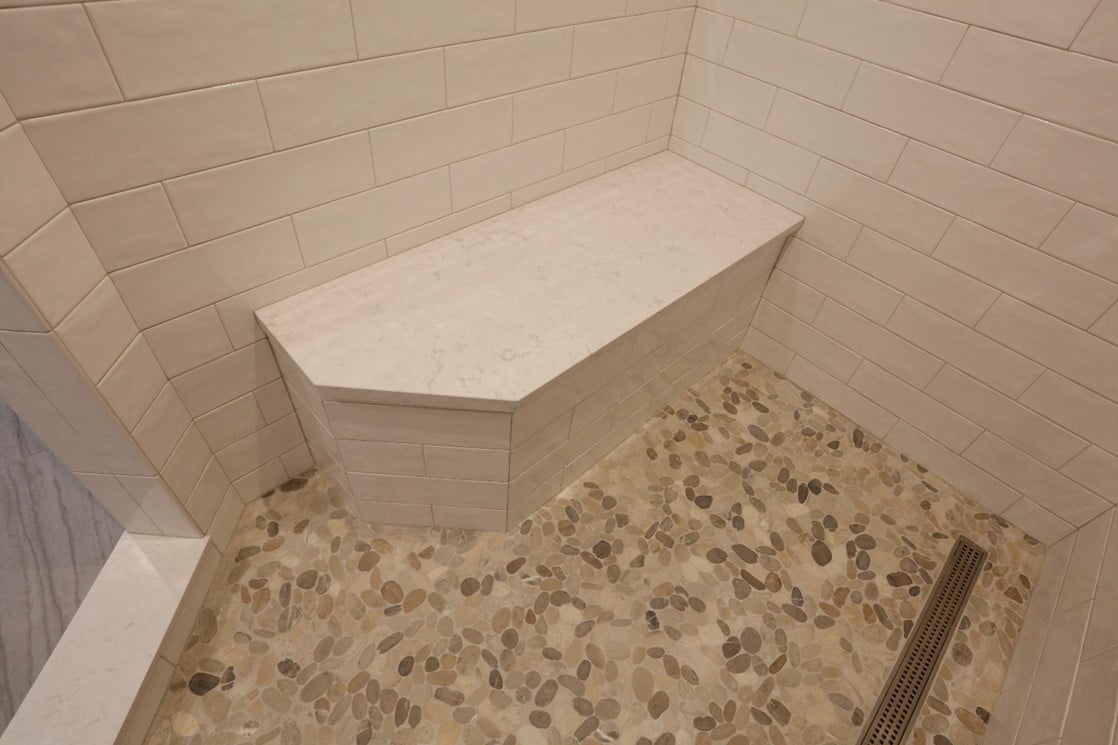
Emser Venetian Tiles used on shower floor with a linear drain
Tile Patterns for Showers
Tile can be used as a design element or a focal point within your shower enclosure. Because tile is a permanent installation, more homeowners today use unique tile applications as accents. On-trend is uniquely shaped tiles such as mosaic designs and octagon and matchstick styles; tiles with bold graphic patterns; tile installed in patterns such as herringbone; and a play on scale with one shape of tile repeated in various sizes.
These unique tile installations can be used as feature walls inside the shower to frame the shower space or inside niches and shelves.
Use Varying Finishes in the Same Color Family
Varying tones of gray tile in different finishes—flat matte and shiny glass—and in various sizes complement the clean, simple lines of glossy white subway tile.
Tile Materials for Showers
Not only do you want your shower tile installation to look great, but you also want it to hold up well over time. So, which tile is your best option for long-term performance?
Natural stone tile is porous and requires much maintenance, making it the least practical tile option for showers.
However, natural stone tile does create a beautiful finish in the shower. If marble or travertine is what you want, know that you must commit to ongoing maintenance to seal the surface. Choose porcelain or ceramic tile to get the luxe look of natural stone in a low-maintenance product. Here’s an example of a beautiful bathroom where marble tile was used.
Porcelain vs. Ceramic Tile
Porcelain tile uses a better grade of aggregate than ceramic tile and is fired at a higher temperature making it denser and more durable than ceramic tile varieties. While ceramic tile has a glazed or finished surface, the tumbled edge is often used to create an organic look. Just be mindful that the irregular edges on ceramic tile make imperfect lines, whereas the smooth finish on porcelain tile provides a straight edge for cleaner installation lines.
Tile Textures for Showers
There is a difference in choosing the best tile for easy cleanup and everyday maintenance. It makes sense that rough-textured tile is more challenging to keep clean than smooth varieties: Because they have a more abrasive finish, ceramic and natural stone tile hold onto soap residue. On the other hand, the smooth surface of porcelain tile is easier to clean and keep fresh day in and day out.
Again, stone tile is naturally porous and requires regular sealing to keep it from absorbing moisture in the shower. Both porcelain and ceramic tile are non-porous products, making them the ideal choice for use in bathroom shower enclosures.
Grout Considerations for Showers
Your tile installation is only as good as the quality of your materials—and that includes grout. At Dover, we use only premium grout for shower installations. Not only does a high-end grout dry true-to-color, it’s also less porous and more durable, which means it keeps moisture away, lasts longer and is easier to clean.
Remember that what you use beneath your tile and grout also significantly impacts tile product performance. To get it right, we use the Schluter waterproofing system in every shower that we install and follow these best-practice bathroom tile installation tips.
Tile Shower Niches, Shelves + Benches
Not only do you want your tile shower to look fabulous, you want it to be functional, too. On-trend is a variety of built-in shower elements that marry form with function, creating great-looking accents highlighted with tile. From niches and shelves for storage to benches or seats, use tile to add designer flair to your shower.
The most essential shower design rule is to build your new shower your way with the features that make you most comfortable. After spending a lot more time in our homes over the last two years, it’s no surprise that renovation trends are focusing on building our homes around ourselves – which means we’ll see more bathroom and kitchen renovations in 2022.
At Dover, we follow the latest industry trends in design and material selections, such as tile. But at the end of the day, we build every project based on your unique style, product selections and direction. That’s what makes a renovation project a success.
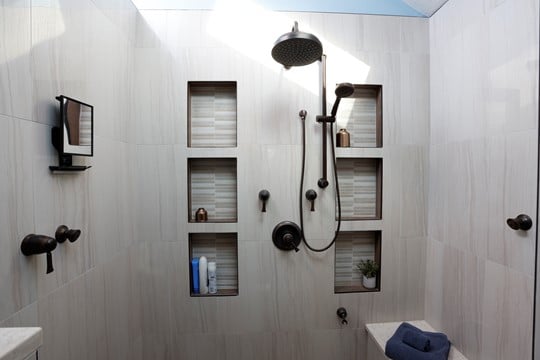
In Cleveland? Have Us Design and Install Your Shower
Based on the westside of Cleveland in North Olmsted, our tile experts at Dover Floor & Tile Center can design and install a unique shower that’s just right for your home. Visit our tile & flooring showroom in North Olmsted near Great Northern Mall to start creating the bathroom of your dreams.
The best is yet to come,
James Giar
